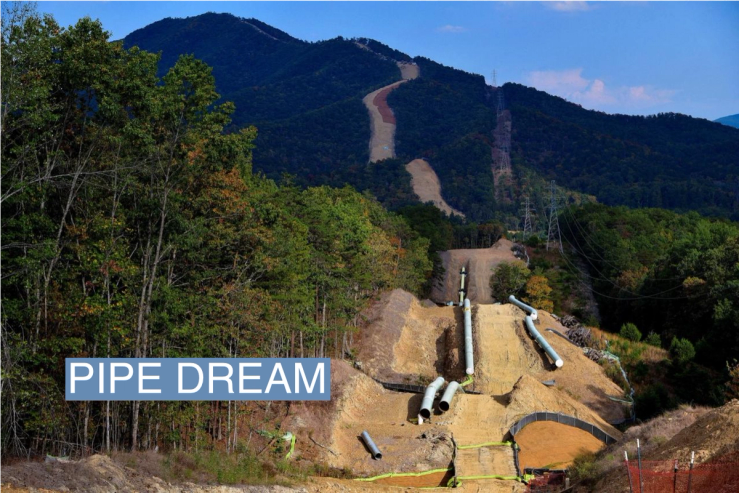The News
Trade groups hailed measures in the debt ceiling deal aimed at fixing the U.S.’s broken approach to infrastructure permitting, despite falling far short of the changes that both Democrats and Republicans have long sought.
Manish Bapna, President of the Natural Resource Defense Council, has the opposite view. In an interview with Semafor, he said that the debt ceiling legislation could actually slow down and complicate the permitting process, and lead to more, not fewer, lawsuits. Our conversation has been edited for length and clarity.
In this article:
Tim’s view
Bapna’s critiques of the debt ceiling deal underscore why a bipartisan compromise on comprehensive permitting reform remains so elusive.
The debt-ceiling legislation, for example, narrows the circumstances in which infrastructure projects must undergo a federal environmental impact assessment and places new restrictions on the timing and structure of those checks. While in theory those steps should make the process faster, they also raise the likelihood that environmental groups will sue the government or project developers in cases where they feel the analysis was inadequate. For any wrench removed from the permitting gears, another gets thrown in.
Another major obstacle is that a permitting deal will ultimately require some trade-offs between renewables and fossil fuels — and Bapna makes clear that environmental groups will be unwilling to stomach concessions on that front.
The Interview
Tim: Is the debt ceiling legislation a baby step forward on permitting reform, or how would you describe the level of progress or lack thereof that we see there?
Manish: We need to start with a recognition that [the permitting policies] we have today are not going to allow us to unlock the incredible benefits contained in the [Inflation Reduction Act]. Did the debt ceiling legislation take us forward in that journey? In my view, it did not. It actually did more to confuse than to clarify, in particular around defining what might actually trigger the National Environmental Policy Act. By complicating how that is defined, [the debt ceiling legislation] will actually lead to more litigation and more confusion. That actually slows down and complicates permitting, rather than expediting it. And it fast-tracked the Mountain Valley Pipeline, which we thought was absolutely unhelpful from both a climate and environmental justice perspective.
Tim: As the permitting reform debate goes on, are there trade-offs you may be willing to make on fossil fuel infrastructure in the interest of clearing the way for renewables and transmission? Where do you draw the line?
Manish: The Mountain Valley Pipeline fails on climate, economic, and community safeguard grounds. In the United States, we need to lead by example, and the lock-in effects of the pipeline are absolutely incompatible with [the 1.5 degrees Celsius warming] goal. On economics, we have failed to see the demand for what that pipeline intends to actually ship. And the way in which the pipeline is being approved circumvents basic safeguards for frontline communities and local ecosystems.
The same arguments I make about MVP, particularly the climate argument, can be made about any large fossil infrastructure at this point in time. The future economic model we want to see for the United States and the world is one largely driven by the dynamism and the innovation of a clean energy economy. Let’s also keep in mind that the permitting system that we have today, the transmission system we have today, have all been designed for fossil-based infrastructure. So we need to reinvent that to speak to the future, not the past.
Tim: So is that tension between renewables and fossil still the biggest stumbling block to greater political compromise on permitting?
Manish: There’s actually a lot of support for clean energy. We see investments from [the IRA] being located in red states or purple states as much or even more than in blue states. There are a few areas where we see real convergence on what we need to do to drive this forward across the political aisle. The need for transmission reform has historically been a bipartisan priority. The idea of programmatic approaches — where you study one relatively smaller project and then approve similar ones — is an area where we could see a lot of common ground. And I think everyone recognizes we need to find ways to better coordinate linkages between federal, state, and local governments, to get the review and approval process more streamlined, better resourced, and more effective.
Tim: On that last point, Columbia University had an interesting study last week, where they identified 228 local or state-level laws or policies across the U.S. that were impeding renewable energy projects. What are the limitations of federal permitting reform, and what else needs to be done to overcome the local NIMBY-type resistance?
Manish: We need to do a better job of engaging communities early, and ensuring there is a recognition by local communities of how they stand to benefit where these projects are sited. When we don’t engage communities in an early and authentic way, it almost always leads to a longer process, problems, and a more uncertain outcome. That study implies to me that we haven’t done a good enough job. We also need to be careful that any individual household or community shouldn’t have an absolute veto over a project that can create a regional or national public good.
Tim: So clearly there’s a lot more work to do ahead on permanent reform. Coming out of the debt ceiling negotiations, has the political momentum come out of the sails of this conversation? When do you see the next opening to push through more or better permitting legislation?
Manish: Everyone recognizes that there’s so much more to be done. I see quite active conversations taking place in Congress. But there’s a lot that the administration can do, given that the challenges we see are not solely congressional in nature. So we’re gonna lean in on them as well. It’s good to think about this as a jigsaw puzzle, with a lot of different pieces we need to get in place. Let’s not focus on one piece at the expense of the other pieces.


